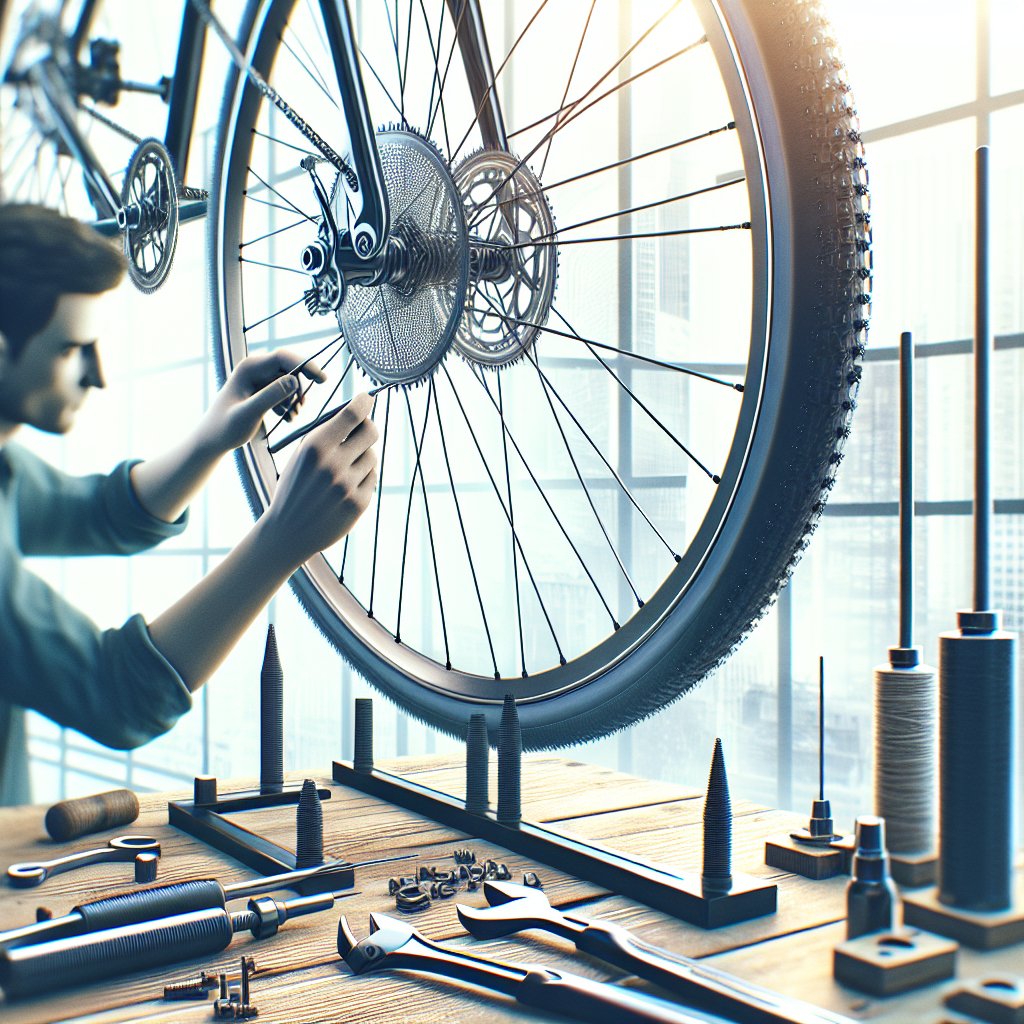Truing a wobbly bicycle wheel is an essential skill for any cyclist, whether you’re a casual rider or a seasoned professional. A wheel that isn’t true can lead to a less efficient ride, increased wear on your bike components, and even safety issues. In this article, we will guide you through the process of truing a bicycle wheel, breaking it down into manageable steps and providing tips to ensure your wheel is perfectly aligned.
Understanding the Basics of Wheel Truing
Before diving into the actual process of truing a wheel, it’s important to understand the basic components and mechanics involved. A bicycle wheel consists of a rim, spokes, and a hub. The spokes are tensioned to keep the rim straight and true. Over time, spokes can loosen or tighten, causing the rim to wobble. Truing a wheel involves adjusting the tension of the spokes to bring the rim back into alignment.
Tools You’ll Need
To true a bicycle wheel, you’ll need a few specific tools:
- Spoke wrench: This is a small tool designed to fit the nipples of the spokes, allowing you to adjust their tension.
- Truing stand: While not absolutely necessary, a truing stand makes the process much easier by holding the wheel in place and providing a reference point for alignment.
- Dish tool: This tool helps ensure that the wheel is centered between the dropouts of the frame.
- Marker or zip tie: If you don’t have a truing stand, you can use a marker or zip tie attached to the frame or fork to act as a reference point.
Identifying the Problem
Before you start adjusting spokes, you need to identify where the wheel is out of true. Spin the wheel and look for wobbles or deviations from a straight line. These can be lateral (side-to-side) or radial (up-and-down). Mark the areas where the wheel deviates using a piece of tape or a marker.
Step-by-Step Guide to Truing a Wheel
Step 1: Secure the Wheel
If you’re using a truing stand, secure the wheel in the stand. If not, you can leave the wheel on the bike and use a zip tie or marker attached to the frame or fork as a reference point. Make sure the wheel is properly inflated to its recommended pressure, as this can affect the truing process.
Step 2: Adjusting Lateral Wobbles
Start by addressing any lateral wobbles. These are side-to-side deviations that cause the wheel to rub against the brake pads or frame. Locate the area where the wobble is most pronounced. If the rim is moving to the left, you’ll need to tighten the spokes on the right side and loosen the spokes on the left side, and vice versa.
Using your spoke wrench, turn the nipple of the spoke a quarter turn at a time. Tighten the spokes on the side opposite the wobble and loosen the spokes on the same side as the wobble. After each adjustment, spin the wheel to check if the wobble has improved. Continue this process until the lateral wobble is minimized.
Step 3: Adjusting Radial Wobbles
Next, address any radial wobbles. These are up-and-down deviations that cause the wheel to bounce. Locate the area where the wobble is most pronounced. If the rim is moving outward, you’ll need to tighten the spokes in that area. If the rim is moving inward, you’ll need to loosen the spokes in that area.
Using your spoke wrench, turn the nipple of the spoke a quarter turn at a time. Tighten or loosen the spokes as needed to correct the radial wobble. After each adjustment, spin the wheel to check if the wobble has improved. Continue this process until the radial wobble is minimized.
Step 4: Check for Dish
Once you’ve addressed both lateral and radial wobbles, it’s important to check the dish of the wheel. The dish refers to the centering of the rim between the dropouts of the frame. Use a dish tool to check the alignment. If the wheel is not centered, you’ll need to adjust the tension of the spokes on one side of the wheel to bring it back into alignment.
Step 5: Final Adjustments
After making all the necessary adjustments, give the wheel a final spin to ensure it’s true. Check for any remaining wobbles and make minor adjustments as needed. It’s important to be patient and make small adjustments, as over-tightening or loosening spokes can cause further issues.
Maintenance Tips for Keeping Your Wheel True
Truing a wheel is not a one-time task. Regular maintenance is essential to keep your wheel in good condition and prevent future wobbles. Here are some tips to help you maintain a true wheel:
- Regularly check spoke tension: Periodically check the tension of your spokes to ensure they are evenly tensioned. Use a spoke tension meter if you have one.
- Avoid hitting obstacles: Try to avoid hitting curbs, potholes, or other obstacles that can cause your wheel to go out of true.
- Inspect your wheel: Regularly inspect your wheel for any signs of damage, such as cracks or bent spokes. Address any issues promptly to prevent further damage.
- Keep your wheel clean: Dirt and debris can affect the performance of your wheel. Keep it clean to ensure smooth operation.
By following these tips and regularly maintaining your wheel, you can ensure a smooth and efficient ride. Truing a wheel may seem daunting at first, but with practice and patience, it becomes a manageable task that can greatly improve your cycling experience.



